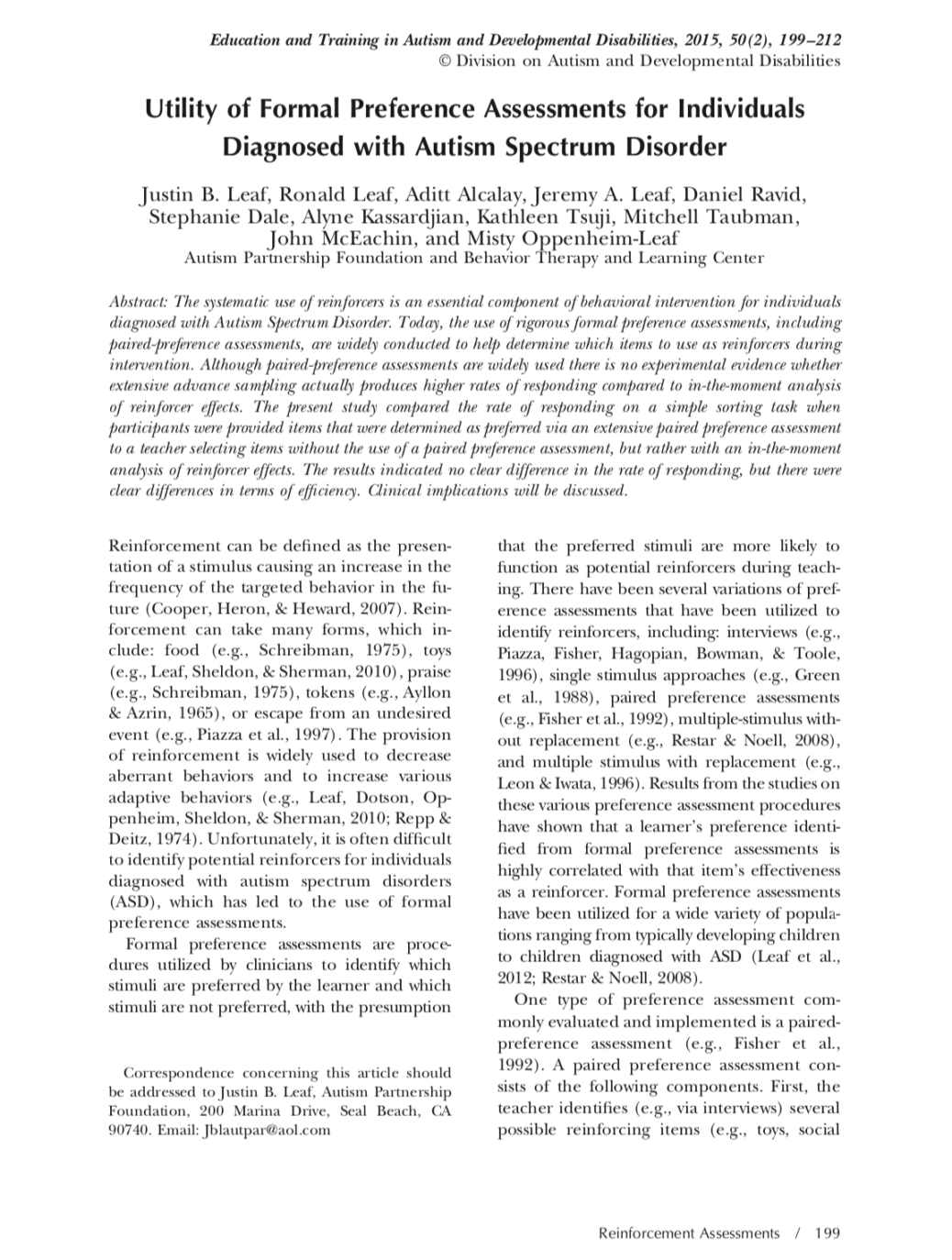It can sometimes be difficult to identify the preferences of individuals diagnosed with autism spectrum disorder (ASD). A common approach to solve this problem is the use of formal preference assessments. These can be long, labor intensive, and provide a narrow view of preference. Instead of formal preference assessments, the Autism Partnership Method uses in-the-moment assessment to identify preferences. This study compared a common formal preference assessment (i.e., paired-stimulus) to in-the-moment reinforcer analysis. Results demonstrated that in-the-moment reinforcer analysis was more efficient and just as effective as a paired-stimulus preference assessment at identifying the preferences of individuals diagnosed with ASD.

